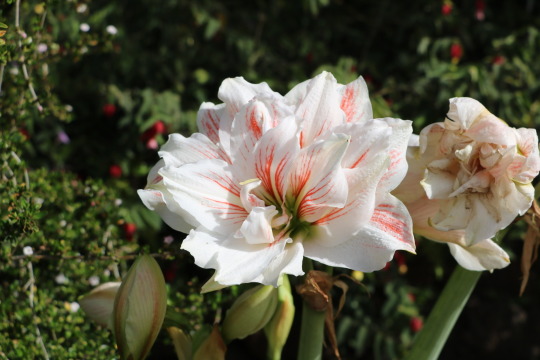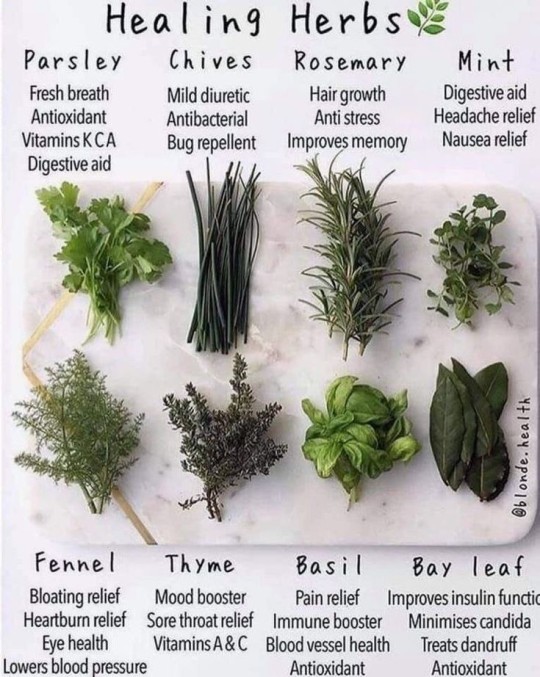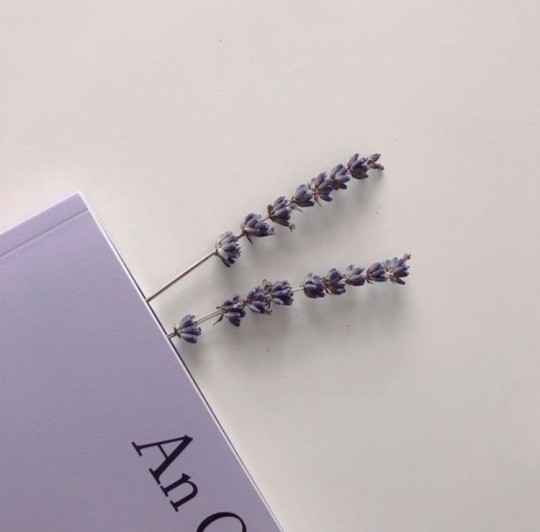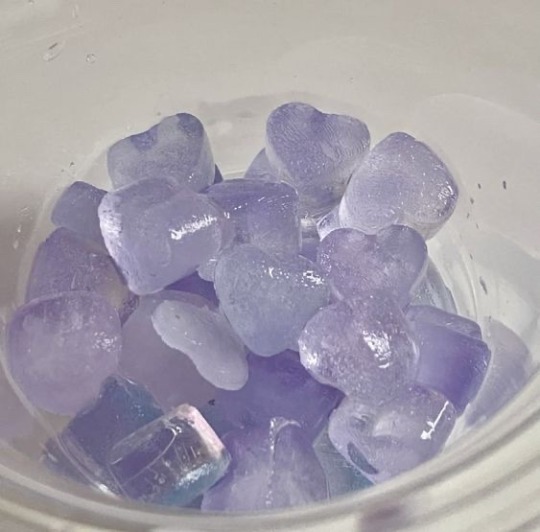#pure herbs
Text

🌿,
𝗁𝗍𝗍𝗉s://instagram.com/piekna_wies
47 notes
·
View notes
Text




#midjorneyart#midjourney#concept art#commercial illustration#ai art#scenery#character design#Pattern#patterns#fabric#handmade#witch#the witcher#witchcraft#witchcore#witches#witchy vibes#witch herbs#pure herbs#herbs#medicinal herbs#plants and herbs#medieval#middle ages#historical
88 notes
·
View notes
Text
Lytlift Brightening Under-Eye Oil-Serum!


INTRODUCING: LYTLIFT BRIGHTENING UNDER-EYE OIL-SERUM
An 18-Herb Formulation Prepared Using a 5000-Year-Old Method of ‘Oil-Cooking’, Enriched with Eye-Opening ‘Eye-urvedic’ herbs!
Instantly brightens the under-eyes and gently allows brightness to resurface in that delicate area
Reduces the appearance of lines around the crow’s feet area
Softens, plumps, and de-texturizes the crepey crisscross look on the skin around the eyes
Soothes and counters the heat and tiredness in your eyes
Moisturizes dry, dull under-eyes with a unique ‘Balance-Intel’, disappearing formula that soaks right into the skin, leaving just the right amount of cooling moisture and neither oily residue nor dry, parched skin.
#ayurveda#pure herbs#artists on tumblr#ayurvedic medicine#ayurvedictreatment#ayurvedicmedicine#ayurvedic treatment#herbal#treatment#health#ayurvedic doctor in allahabad#ayurvedic doctor in ghaziabad#ayurvedic doctor in rajkot#dombivli#digital illustration#digital painting#drawing#painting#digital art#portrait#artwork#animation#kalyan#muslim#my art#mine#menswear#tumblr milestone#meme
42 notes
·
View notes
Text





1st post: flowers in Portugal by me (:
#flowers#beauty#nature#colorful#portugal#beauty in nature#lotus#hydrangea#orchid#relaxing#pure herbs#pure beauty#naturecore
26 notes
·
View notes
Text
Green Witch:
Also known as “garden witch.” They are focused on the natural world and the plants and animals that inhabit it.
─── ・ 。゚☆: *.☽ .* :☆゚. ───
Hedge Witch:
They are focused on the spiritual aspect of nature and may use their connection to the natural world in their personal growth and development.
─── ・ 。゚☆: *.☽ .* :☆゚. ───
Kitchen Witch:
They are focused on the practical aspects of magic and may use their skills to improve their daily lives and the lives of those around them.
─── ・ 。゚☆: *.☽ .* :☆゚. ───
“10 Types of Witches - Witchcraft & Magick Explained.” Witchy, witchyhq.com/blogs/news/8-types-of-witches-witchcraft-magic. Accessed 8 Oct. 2023.
#hedge witch#kitchen witch#herbalism#herbs#grimoire#baby witch#freyja#green witch#altar#witch tips#divination#paganblr#pagan witch#pure herbs#medicinal herbs#plants and herbs#garden#hedge witches#green witchcraft#baby witch tips#cottage#spirituality#nature#forest#spiritual development#spiritual awakening#ritual
30 notes
·
View notes
Text
Green witch





From pinterest
#almanar herbafit#herbarium#herbal#medicinal herbs#herbs#alternative moodboard#witch moodboard#witch garden#green witch#green aesthetic#witch#witches#witchcraft#pure herbs#herbst#kitchen witch#green#witch books#witchcraft books#herboristerie#plantcore#plant magic#cottage witch#witches of tumblr#wiccan#wicca#pagan witch#witchcraft 101#witchy woman#witch aesthetic
13 notes
·
View notes
Text



#tarot reading#psychic readers#tarot cards#tarot#psychic#psychic readings#tarot deck#love#psychic advice#master psychic#herbalism#herbs#herbal#pure herbs#veggies#wild sweet potato#ipomea#ipomea pandurata#seeds#farming
19 notes
·
View notes
Text
The Role of Yoga and Ayurveda in Diabetes Management
Healing from Within: The Role of Yoga and Ayurveda in Diabetes Management
Step into a world where ancient wisdom meets modern science as we explore the profound impact of yoga and Ayurveda on diabetes management. In an era of escalating stress and sedentary lifestyles, the holistic approach of these ancient practices offers a beacon of hope in the management of diabetes. Through targeted postures, breathwork, and meditation, yoga unfolds its therapeutic benefits, promoting insulin sensitivity and reducing blood sugar levels. Meanwhile, Ayurveda, with its personalized approach, delves into herbal remedies, dietary modifications, and lifestyle recommendations to restore the body's balance and vitality. As we delve into the nexus of these time-honored practices and the contemporary understanding of diabetes, discover how their integration can empower individuals to embark on a transformative journey towards holistic well-being. Join us as we unravel the compelling synergy between ancient traditions and modern diabetes management, offering a roadmap for self-healing from within.
Understanding Diabetes and its Management
Diabetes is a chronic condition characterized by high levels of glucose in the blood. It can result from inadequate insulin production, ineffective use of insulin, or both. The management of diabetes involves controlling blood sugar levels to prevent complications. Conventional treatments often include medication, insulin injections, and dietary modifications. However, the holistic approach of yoga and Ayurveda offers complementary avenues for managing diabetes. By understanding the underlying causes and impacts of diabetes, individuals can make informed choices about incorporating these ancient practices into their lifestyle.
Yoga and Ayurveda offer a holistic perspective on diabetes, considering the interconnectedness of mind, body, and spirit. Rather than simply treating the symptoms, they address the root causes of imbalance, aiming to restore harmony and well-being. As we delve deeper into the specific practices and principles of yoga and Ayurveda, we will uncover their profound potential in transforming the lives of those grappling with diabetes.
Yoga Practices for Diabetes Management
Yoga, an ancient practice originating in India, encompasses a diverse range of techniques designed to promote physical, mental, and spiritual well-being. When tailored for diabetes management, yoga practices can play a crucial role in regulating blood sugar levels and enhancing overall health. Asanas, or yoga postures, are a fundamental aspect of yoga practice. Specific asanas, such as the Sun Salutation (Surya Namaskar), the Shoulder Stand (Sarvangasana), and the Seated Forward Bend (Paschimottanasana), have been found to be particularly beneficial for individuals with diabetes.
In addition to asanas, pranayama, or breath control techniques, are integral to yoga practice. Deep breathing exercises, such as Anulom Vilom (alternate nostril breathing) and Kapalbhati (skull shining breath), can help improve insulin sensitivity and reduce stress levels, both of which are essential for managing diabetes. Furthermore, meditation and relaxation techniques in yoga can alleviate the psychological and emotional stress associated with diabetes, promoting a sense of calm and balance.
Ayurvedic Approach to Diabetes
Ayurveda, often referred to as the "science of life," is an ancient system of medicine that originated in India over 5,000 years ago. Central to Ayurveda is the concept of individual constitution, or dosha, which influences one's physical, mental, and emotional characteristics. In the context of diabetes, Ayurveda emphasizes the balance of the three doshas – Vata, Pitta, and Kapha – to manage the condition effectively. Ayurvedic treatments for diabetes typically involve a combination of herbal remedies, dietary modifications, and lifestyle recommendations tailored to an individual's doshic constitution.
Herbs such as bitter melon (Momordica charantia), fenugreek (Trigonella foenum-graecum), and turmeric (Curcuma longa) are commonly used in Ayurveda to regulate blood sugar levels and improve insulin sensitivity. Additionally, dietary guidelines in Ayurveda emphasize the consumption of whole foods, such as whole grains, legumes, and fresh vegetables, while minimizing the intake of processed and sugary foods. Lifestyle modifications, including stress-reducing practices, regular exercise, and adequate sleep, are also integral to the Ayurvedic approach to managing diabetes.
Benefits of Yoga and Ayurveda for Diabetes
The integration of yoga and Ayurveda into diabetes management offers a myriad of benefits beyond the regulation of blood sugar levels. These ancient practices promote overall well-being by addressing the physical, mental, and emotional aspects of health. Yoga and Ayurveda can enhance insulin sensitivity, promote weight management, reduce inflammation, and improve cardiovascular health – all of which are crucial considerations for individuals with diabetes.
Moreover, the holistic nature of yoga and Ayurveda fosters a sense of empowerment and self-awareness, allowing individuals to develop a deeper understanding of their bodies and the factors influencing their health. By incorporating these practices into their daily routine, individuals can cultivate resilience, balance, and vitality, ultimately enhancing their ability to manage diabetes effectively and lead a fulfilling life.
Incorporating Yoga and Ayurveda into Daily Routine
The integration of yoga and Ayurveda into daily routines can be a transformative endeavor for individuals seeking to manage diabetes holistically. Establishing a regular yoga practice, even if it involves just a few minutes of gentle stretching and breathing exercises each day, can yield significant benefits. Similarly, incorporating Ayurvedic dietary principles, such as mindful eating, balanced meals, and the inclusion of diabetes-friendly herbs and spices, can contribute to better blood sugar control and overall health.
Furthermore, the incorporation of mindfulness and stress-reducing techniques, such as meditation and relaxation exercises, can help individuals develop resilience in the face of the challenges posed by diabetes. By making these practices a part of their daily routine, individuals can experience a profound shift in their well-being, fostering a sense of empowerment and self-healing from within.
Dietary Recommendations in Ayurveda for Diabetes
Diet plays a pivotal role in the management of diabetes, and Ayurveda offers valuable insights into dietary recommendations tailored to individual constitutions. The emphasis on whole, unprocessed foods, as well as the inclusion of specific herbs and spices, can contribute to better blood sugar control and overall health. In Ayurveda, dietary guidelines for diabetes revolve around balancing the doshas, promoting digestion, and managing excess sugar in the body.
For individuals with diabetes, incorporating foods that are naturally low in glycemic index, such as leafy greens, bitter gourds, and whole grains, can help regulate blood sugar levels. Additionally, Ayurvedic principles advocate mindful eating, emphasizing the importance of savoring each meal, chewing food thoroughly, and being attuned to one's body's hunger and satiety cues. By aligning dietary choices with the principles of Ayurveda, individuals with diabetes can optimize their nutritional intake and support their overall well-being.
Case Studies and Success Stories
The profound impact of yoga and Ayurveda on diabetes management is exemplified by numerous case studies and success stories. Individuals who have integrated these ancient practices into their daily lives have reported improvements in blood sugar control, reduced dependence on medications, and an enhanced sense of well-being. From gentle yoga postures to personalized Ayurvedic regimens, these individuals have experienced a transformative shift in their relationship with diabetes, empowering them to take charge of their health and lead fulfilling lives.
These success stories serve as a testament to the potential of yoga and Ayurveda in diabetes management, inspiring others to explore these holistic avenues for well-being. By sharing these experiences, we can illuminate the path for individuals seeking alternative approaches to managing diabetes, offering them hope and guidance in their journey towards self-healing.
The Science Behind Yoga and Ayurveda for Diabetes
While the therapeutic benefits of yoga and Ayurveda for diabetes have been widely acknowledged, the scientific understanding of their mechanisms continues to evolve. Research studies have demonstrated the positive impact of yoga on insulin sensitivity, glucose metabolism, and stress reduction in individuals with diabetes. Similarly, clinical trials investigating the efficacy of Ayurvedic herbal formulations and dietary interventions have shown promising results in managing blood sugar levels and mitigating the complications associated with diabetes.
The convergence of modern scientific research and ancient wisdom provides a compelling foundation for the integration of yoga and Ayurveda into diabetes management. By bridging the gap between traditional practices and contemporary evidence, individuals and healthcare professionals can gain a deeper understanding of the multifaceted benefits of these holistic approaches, paving the way for their wider adoption in the management of diabetes.
Conclusion
In conclusion, the integration of yoga and Ayurveda offers a holistic and empowering approach to diabetes management. By incorporating targeted yoga practices, breathwork, meditation, herbal remedies, dietary modifications, and lifestyle recommendations, individuals with diabetes can embark on a transformative journey towards holistic well-being. The profound synergy between ancient traditions and modern diabetes management illuminates a path for self-healing from within, empowering individuals to cultivate resilience, balance, and vitality. As we continue to unravel the compelling nexus of yoga, Ayurveda, and diabetes management, we pave the way for a future where ancient wisdom and modern science converge to enhance the well-being of individuals worldwide.
6 notes
·
View notes
Text

Thyme for Herbs🌿
With springtime here, I am already daydreaming about how to spice up the Herb Garden. What sort of pots, labels, and herbs will I use this year?
https://www.pinterest.com.
62 notes
·
View notes
Text

Saturday morning, ready for a chill weekend ahead.
Gelato, Amnesia haze, Enemy of the State, Queen haze, Ken kush, and the homegrown critical mass
#ganja#weed#ganjafarmer#homegrown#smoke weed#cannabis#420#420culture#420daily#420nation#smoke ganja#ganjalove#ganjalover#crafty#gelato#kush#vapeworld#vapestagram#dry herb vaporizer#pure herbs#natural herbs#blowing smoke#smoke weed everyday#raw#420everyday
8 notes
·
View notes
Text
DISCOUNT ON BESTSELLING COMBOS!
At night, use Manjish Glow Elixir® With Indian Madder, Wild Lemon and Butter Tree Glow-Giving and Complexion Restoring Night Facial Massage Oil, Ayurveda’s Pink Power Potion


A beautiful pink colored elixir, this face oil is specifically meant for patchy skin as well as dull and uneven skin tones, and those who're not very keen to use heavy oils on the face. This oil is not your usual face oil. In some countries, formulations like Manjishthadi Oil are treated at par with medicinal products!
With no added fragrance at all, this herbal oil contains some very interesting and highly effective ingredients like Indian Madder or Manjishtha, Butter Tree or Mahua, Lemon or Jambheer and Shellac or Lakh amongst other well-known ingredients like Licorice, Cow Milk and Sesame Oil.
To quote ancient Ayurvedic texts: “Massaging with this oil helps dealing easing the appearance of spots. It clears the look of the face (evens the skin tone) and eases the appearance of wrinkles. Massaged for seven consecutive nights, it makes the face glow as if it was gold!”
#artists on tumblr#artwork#ayurvedic doctor in ghaziabad#ayurvedicmedicine#ayurvedictreatment#ayurvedic doctor in allahabad#animation#ayurvedic doctor in rajkot#ayurvedic treatment#ayurveda#ayurvedic medicine#pure herbs#kalyan#dombivli#skincare#skincareproducts#acne skincare#skin cancer#skintight#face#elsa hosk#pretty face#elegant#beautiful#india#spiderman india#indian#india love
31 notes
·
View notes
Text
The Secret of Most Famous Bhagavad Gita Shloka Explained by Gurudev" on YouTube
youtube
#Rejuvenate yourself with Ayurveda and Yoga Campaign#Ayurveda#Doctor#Treatment#Nadi Pariksha#Medicine#Pure Herbs#Sudarshan Kriya#Youtube
4 notes
·
View notes
Text




﹒→﹒🪻 ⟡ lilac ?

#namjoon#bts moodboard#bts fic#bts army#bts icons#bts#namjoon moodboard#moodbord#purple#pure herbs#rm#kpopidol#kpop#kpop moodboard
6 notes
·
View notes